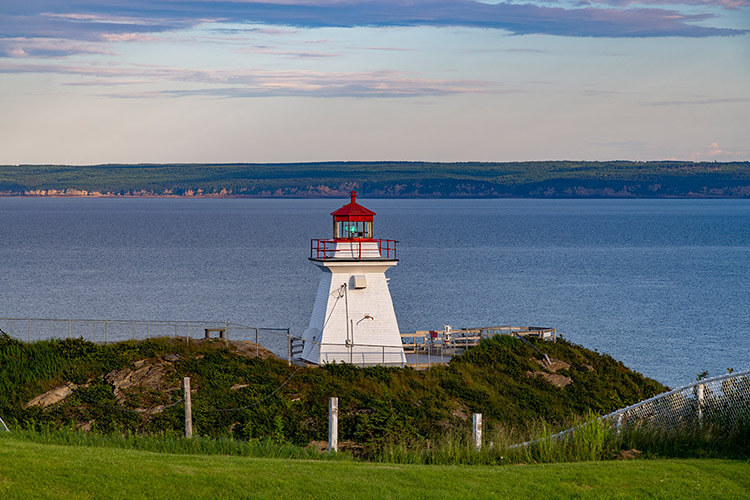
All photos © Robin and Arlene Karpan

With a name like Cape Enrage, we just knew it had to be a great spot. Marked by an historic lighthouse sitting on a headland high above New Brunswick’s Bay of Fundy coastline, Cape Enrage is famous for its tumultuous waters and dangerous reef. But the breathtaking setting is only one of many reasons to visit this special place about a 25-minute drive from the town of Alma.
As we approach the cape, we turn off Highway 915 and take Cape Enrage Road that winds through the countryside of fields, marshes, and views over the sea, eventually climbing towards the headland. Dominating the clifftop is the lighthouse dating to 1870 with its red and white wooden clapboard construction. The light and foghorn still operate.
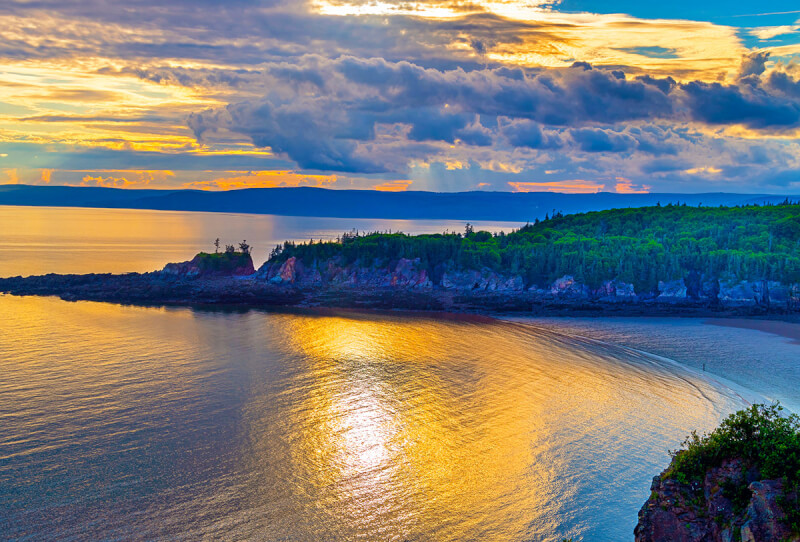
This is the second lighthouse on this spot, the original dating to 1840 and one of the earliest on the Fundy coast, chosen because the light would be visible for a long distance away, and could alert ships of the hazards along the coastline due to the high tides and winds. Still, many shipwrecks occurred nearby, often in raging storms. The Bay of Fundy has the highest tides in the world, reaching as much as 16.3 metres or 53 feet every 12 hours.
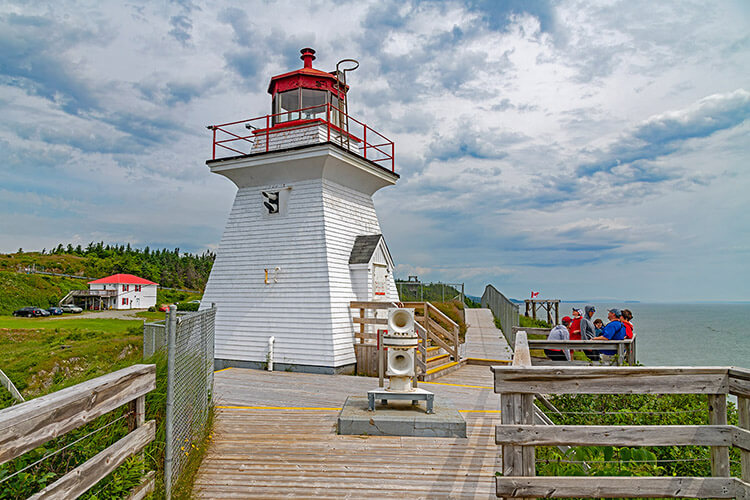
What to do at Cape Enrage
Before exploring around the site, it’s a good idea to consult the tide charts to find out when high tide is on the way and the beaches and rocky shorelines will be submerged. The beach is some 7 km long, and walking it along the uneven surface of broken rocks can take longer than you think.
If you’re a rock hound, or just curious about finding out more about the geology of the area, sign up for a Fossil Tour like we did on the day of our visit.

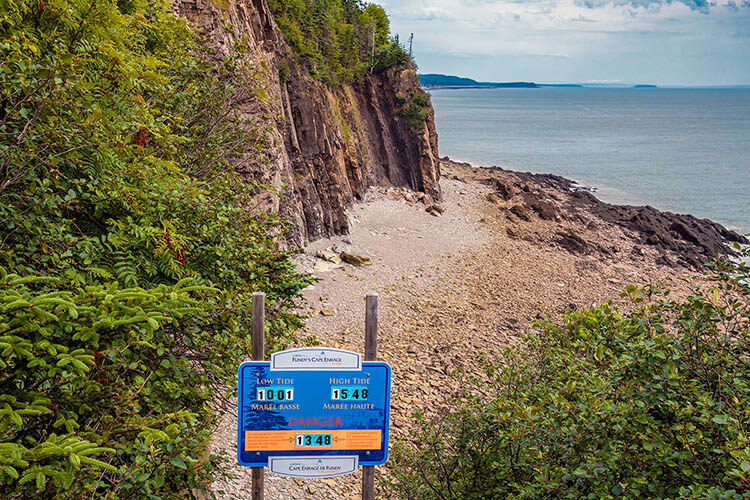
Our tour began as our guide led us down a long staircase to a rocky beach. She explained that the fossils are contained in layers of sedimentary rock that date back some 320 million years. At that time, the land that is now part of New Brunswick was closer to the equator with a tropical climate.

Beachcombing Treasure Hunt
The types of fossils we were looking for were from lowland plants and trees that were preserved in the sediments along river channels and other waterways. Looking up at the rock face, we could see the clear lines of sediments of sandstone and mudstone where the fossils are contained. With erosion, pieces of the hillside break off and drop onto the beach, creating a never-ending supply of new fossils to discover. The high tides also turn over and redistribute the rocks.
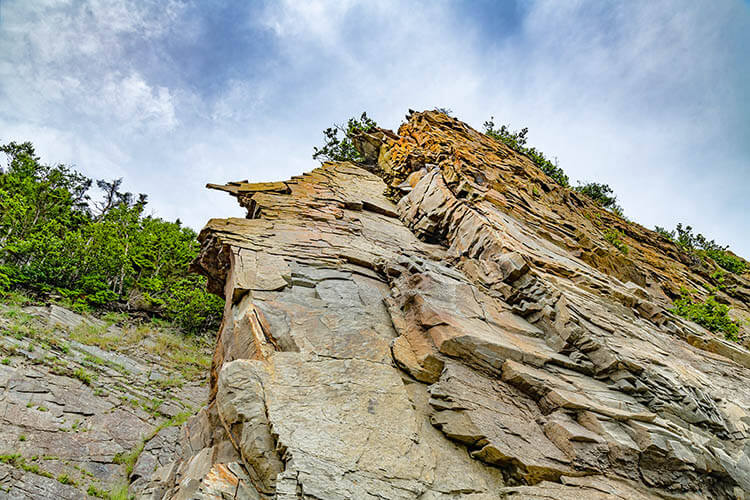
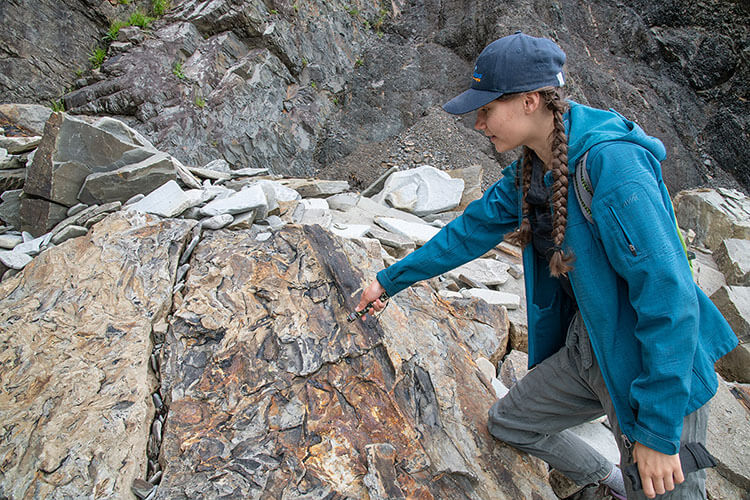
We didn’t have to walk far to find the first fossil in a rock lying on shore. The fossil was from a calamite, a bamboo-like plant commonly found growing along the shoreline of swamps millions of years ago. Back then, these giant horsetails reached heights up to 10 metres, while horsetails today are typically 1.5 metres. The rock clearly showed pieces of vertical ribs that were once on the outside of the calamite. As the softer inner core rotted away, the void was filled with sediment, helping to preserve the plant as we see it today. These are the most common fossils found on this beach.
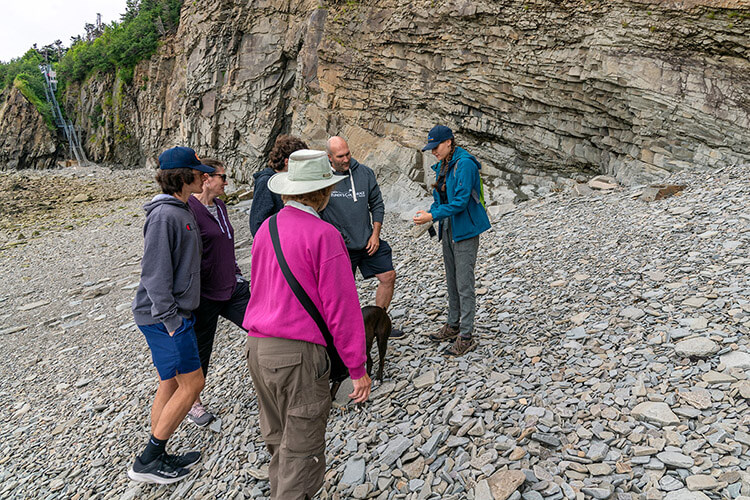
Fossils of lycopsid trees growing along ancient swampy lowlands also appear on the beach. These enormous trees grew as much as 50 metres tall, with a diameter of 1-2 metres. They had a unique leaf pattern on their trunks – the leaves grew in spirals around the trunk, and when the leaf died and fell away, it left a diamond-shaped scar on the bark.
Many other types of fossils occur at Cape Enrage, including preserved leaves that were washed downstream from trees that once grew in upland regions. Tracks made by a giant millipede up to 2 metres long were also found, along with evidence from amphibians and reptiles.
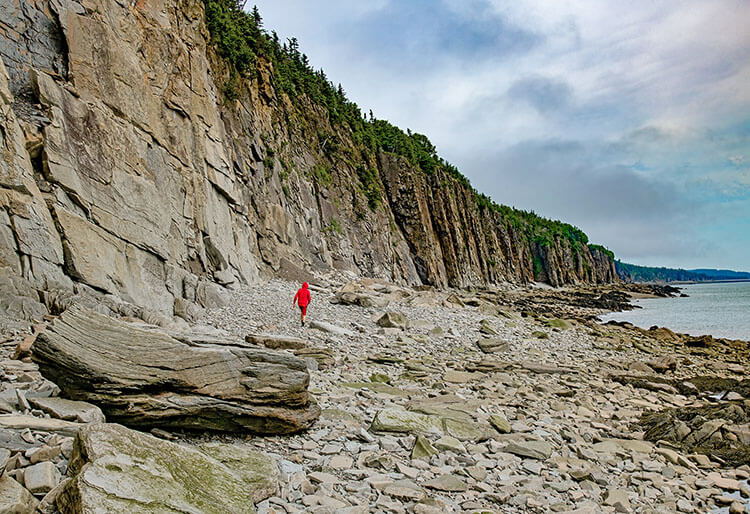
Then it was our turn to find our own fossils. Those in our group spread out and searched the shoreline, turning over rocks at random to see if they contained fossils. Almost immediately, we came up with samples. It was like a beachcombing treasure hunt with fossils almost everywhere we looked.
Try some High Octane Adventures
If you’re looking for more adrenaline-pumping activities at Cape Enrage, try the zipline for a bird’s-eye-view of the Bay of Fundy. A ticket gives you three runs along the 183-metre (600 feet) zipline.
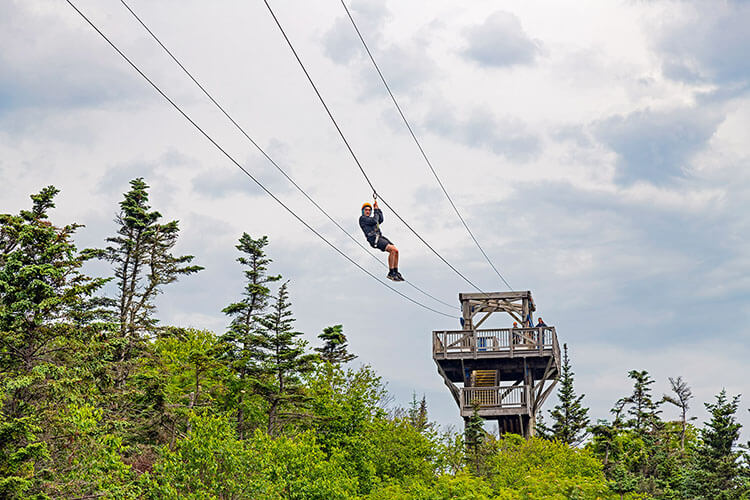
Another option is rappelling down the 42-metre-high cliffs overlooking the bay. All equipment and instruction are provided, and you can often get in two descents. There is also a zipline and rappelling combo ticket available for $135.00 (prices current as of publication date).
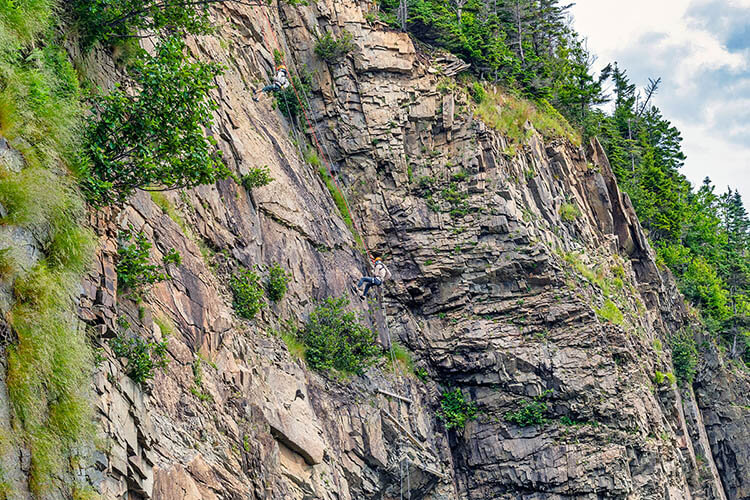
Restaurant and Gallery
The Cape House Restaurant features locally-supplied products, and has an interesting menu with choices such as Homemade Enraged Chili, Foggy Day Sandwich, and Cape House Burger. We opted for the fish and chips and seafood chowder, both of which were some of the best we tasted anywhere. There’s also seating outside where you can watch the waves and feel the sea breeze.
A gallery is also onsite, featuring jewelry, photography, paintings and carvings, all done by local artists.

Alma
The small town of Alma next to Fundy National Park makes a convenient place to stay and take in Cape Enrage on a daytrip. We stayed at the Alpine Motor Inn on Main Street. Everything we needed was close at hand including craft brew pubs and plenty of places to enjoy fresh seafood, a grocery store, and gas station. Throughout the day, the views of the cliffs and harbour changed with the tides and sunshine, illuminating the headlands and beach.
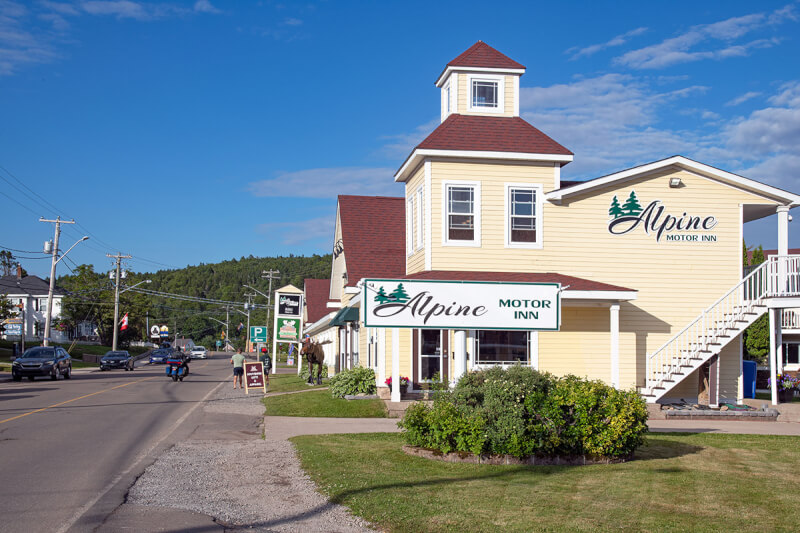
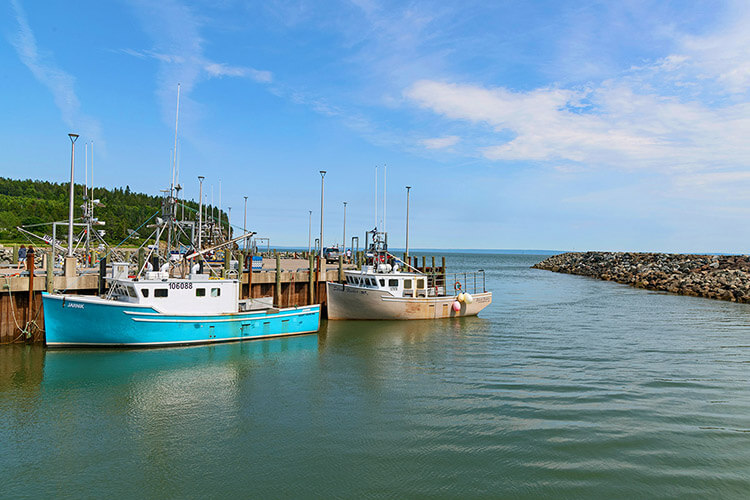
Resources
Cape Enrage Visitor Information
Tourism New Brunswick
Other articles on New Brunswick on Photojourneys that you might enjoy
- Photographing Puffins on Machias Seal Island
- Dulsing on New Brunswick’s Grand Manan Island
- Two outstanding Bed & Breakfasts in Fredericton
- King’s Landing – A Window to the Past
- Having a Sweet Time in St. Stephen, New Brunswick
- Covered bridges of New Brunswick
- Exploring Cape Enrage
- Saint John, New Brunswick is a Delightful Mix of History and Nature
- St. Martins and the Fundy Trail Parkway
- Minister’s Island – Driving Across the Ocean Floor in New Brunswick
- Kingsbrae Gardens near St. Andrews
- Visiting the Hopewell Rocks
SUBSCRIBE to Photojourneys below
Feel free to PIN this post on Cape Enrage, New Brunswick
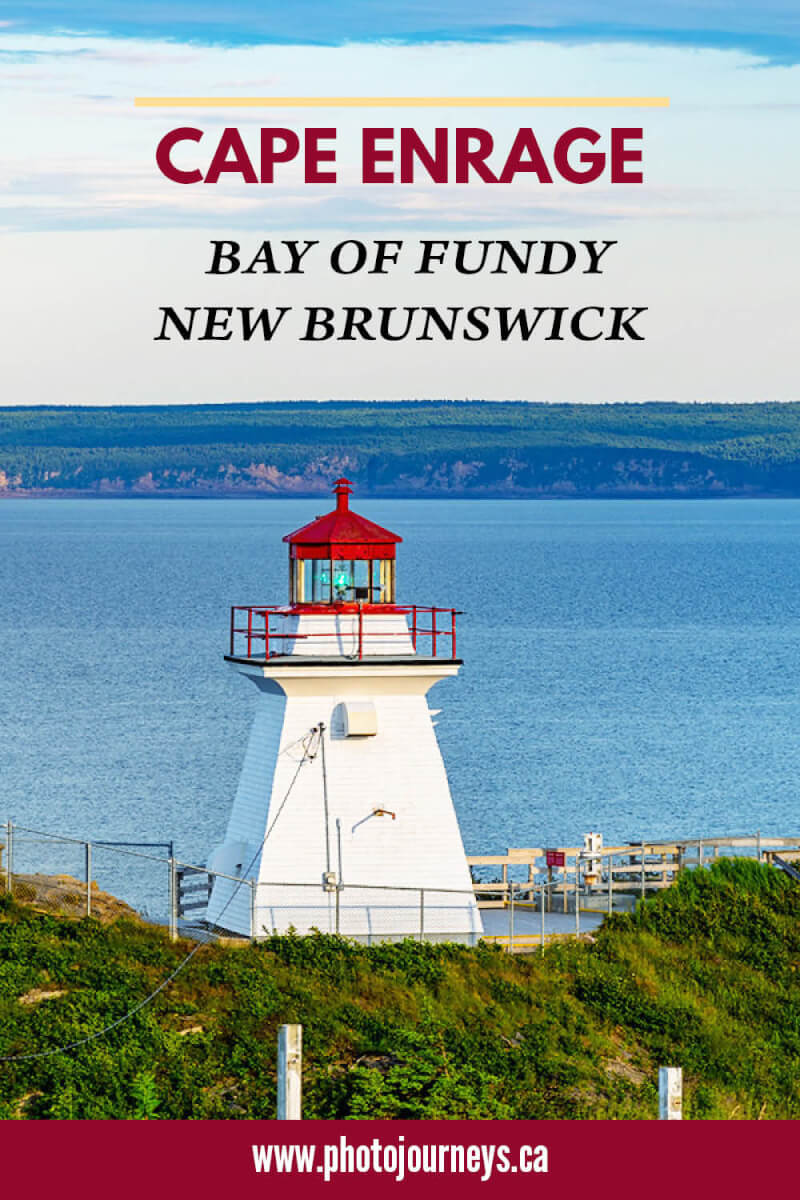


My wife and I visit often. Cape Enrage and the surrounding area has real gems and down home friendly folks.